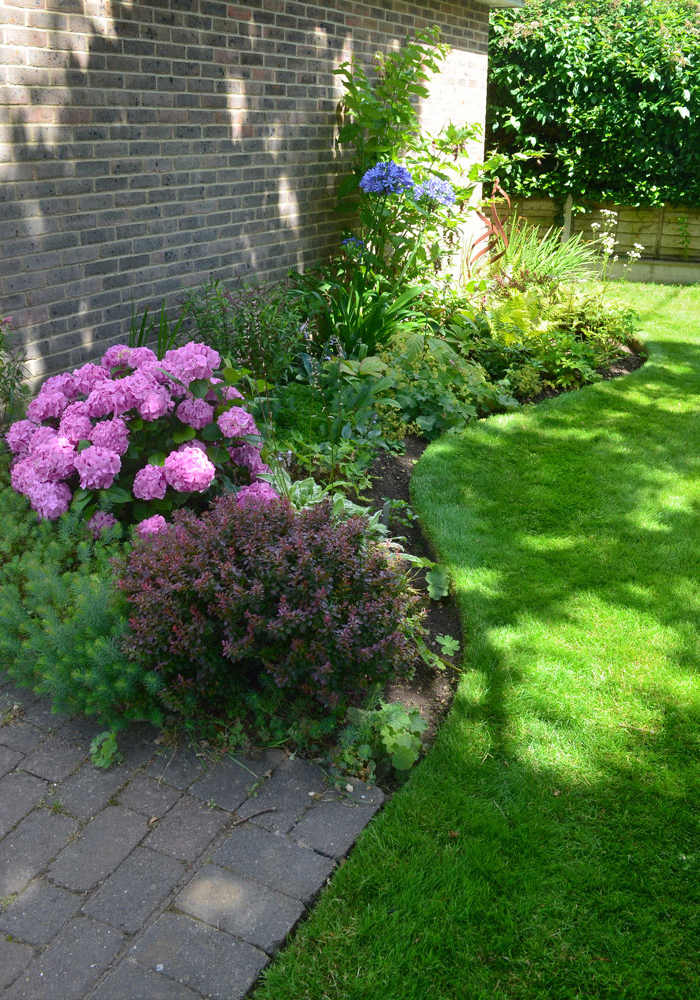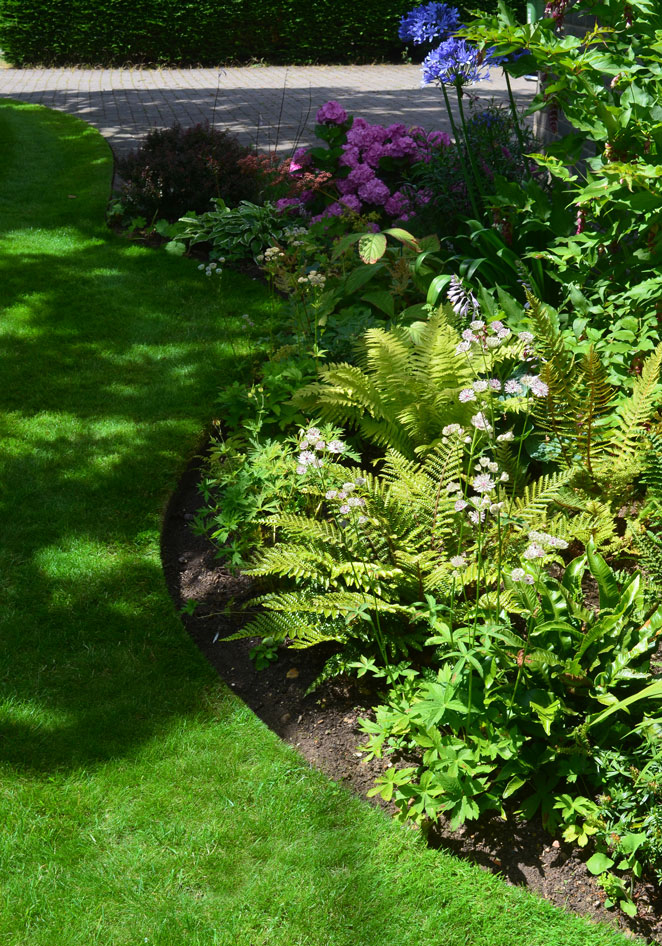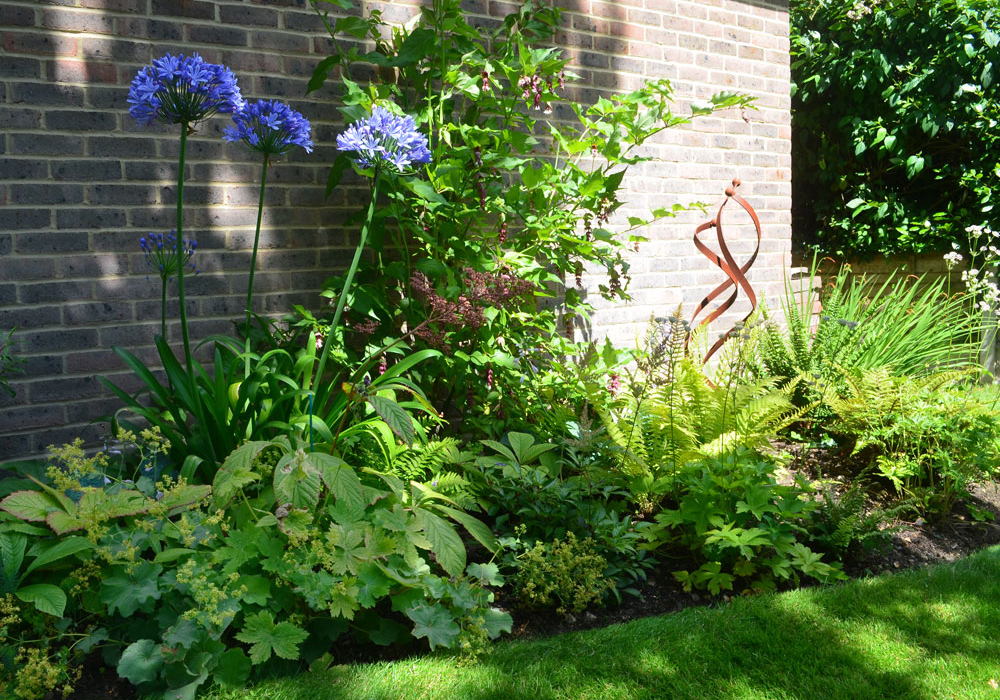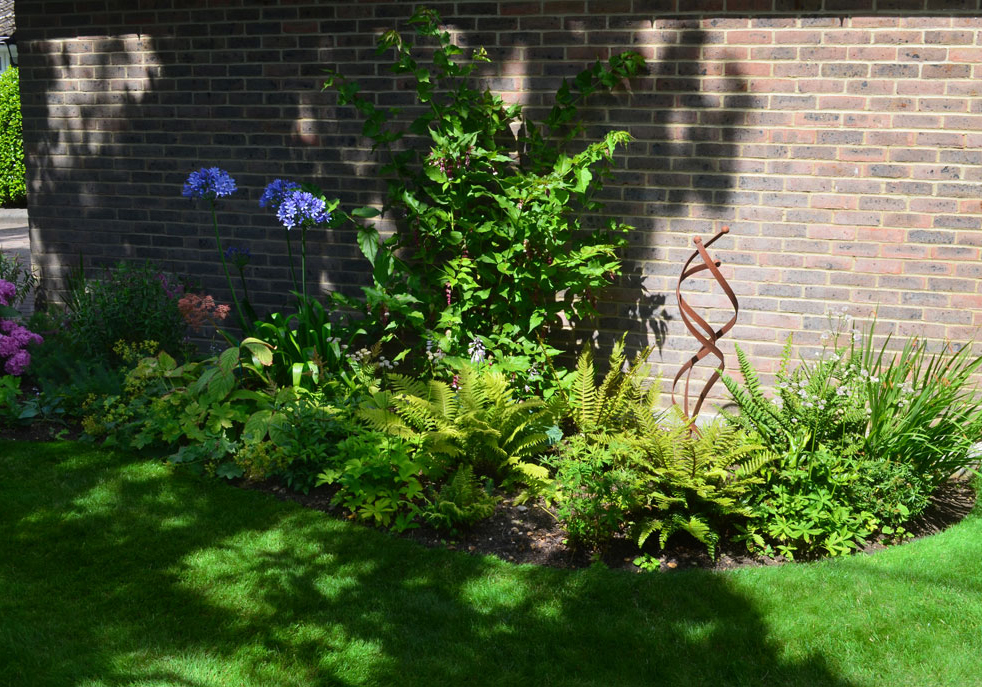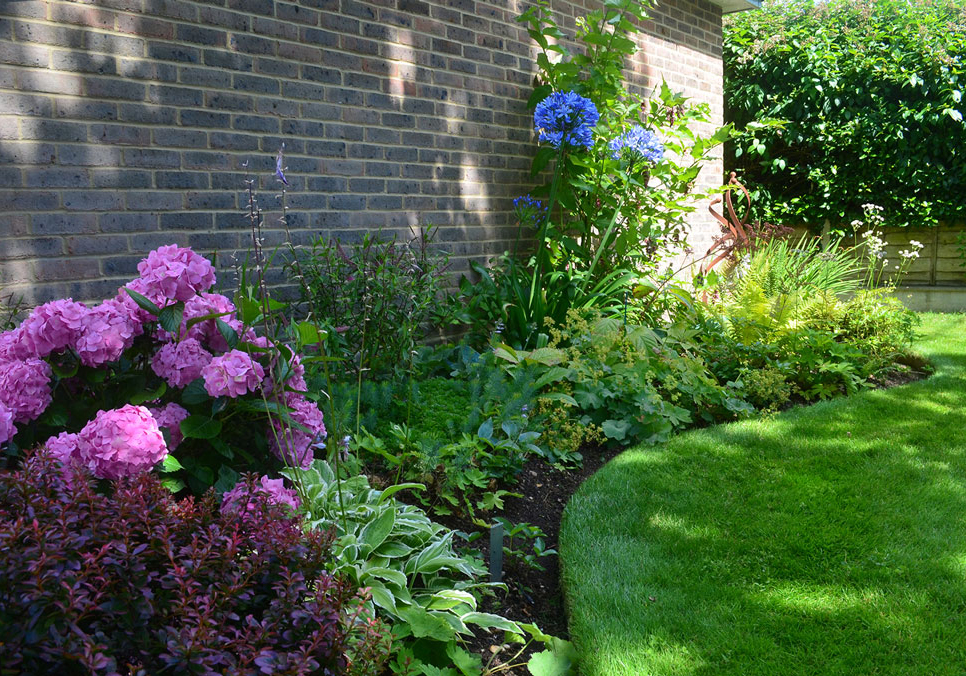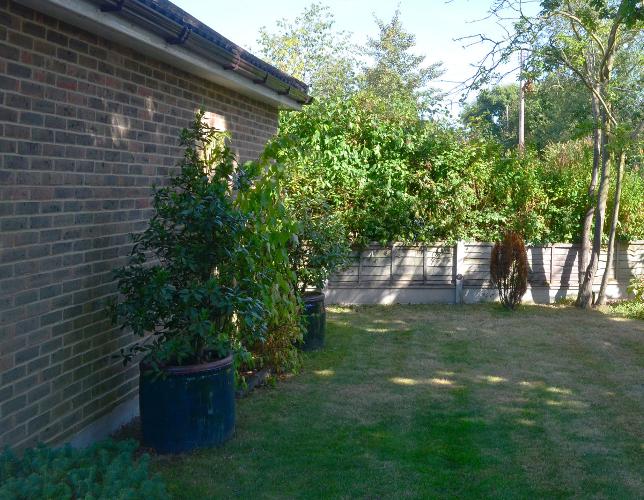Improving a blank wall with a new shade tolerant border
Garden Design Brief
The brief on this small garden renovation project was quite straightforward but with some challenges to overcome. The site was a blank wall to an outbuilding, which endures shade for most of the day created by large Oak trees and hedging situated to the south and east of the wall. Primarily the design was to transform the area into a space with more colour, texture and interest. The planting should be rich and verdant with some points of contrasting colour and be able tolerate deep shade and very dry conditions in the summer. I was also made aware that the planting should also be able to withstand some wet conditions in the winter caused by poor drainage. Furthermore, there was a request to avoid climbing plants, particularly any form of Ivy and I was asked to include some form of sculpture to deliver a contrasting, low-cost point of interest to the planting.
General Observations
Following a soil I carried out in the area, I established that it was fundamentally made up of a thin layer of poor stony topsoil on top of dense London clay mixed with builders’ rubble and hardcore. The soil was dry and compacted and currently, standing against the wall were two large pots containing an old Bay tree in each. The lawn in this area is very patchy and of poor quality. There was also an existing Leycesteria formosa, which the client wanted to retain, struggling with the soil conditions. The shade was also quite severe as shown by the images.
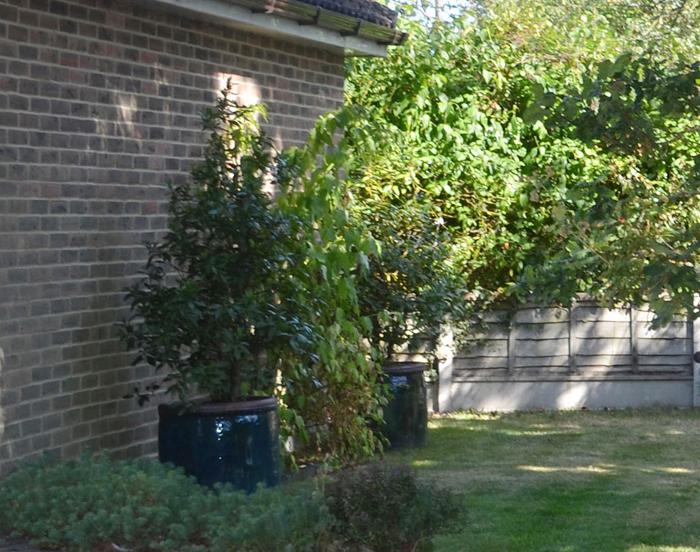
Garden Border Renovation Solution
The two Bay trees were completely ‘pot bound’ and had grown into rather ugly and awkward shapes. The large pots housing the Bay trees could be used elsewhere within the client’s property to much better effect, so I removed these from the plan altogether. This idea was initially met with some trepidation by the client, but one lesson I’ve leant is that it pays to be ruthless in the garden when something just isn’t working. The soil underneath and around the pots was very dry and compacted as the area was draining against the wall. To this end I wanted to design a new border for this shady area of the garden, which could sustain much more interesting plant varieties providing interest all year round without creating too much maintenance. So, to begin with the old turf was removed, and the area was completely dug over to a depth of approximately 400mm with a significant amount of new organic material incorporated with new topsoil to provide a good base and improved drainage and nutrition for the new planting. The area does enjoy some sunshine from the West in mid to late afternoon, but the characteristics of dry shade ‘long term’ would still be present and therefore the new planting would need to be able to tolerate this.
Other areas of the garden had been developed around soft curves so, in order to maintain unity, I designed the new border to be a sinuous curve continuing on from a hard standing edge adjacent to the area. The designed shape was be edged in 150mm steel and the new lawn planted with seed that is shade tolerant but also able to withstand wet conditions.
Planting
The main planting consisted of a mixture of evergreen and deciduous ferns including, Asplenium scolopendrium, Polystichum setiferum ‘Wollastonii’, Polystichum polyblepharum, Dryopteris affinis ‘Cristata augustata’ and a mixture of Hostas, Rogersia, Astilbe, Geranium phaeum and Astrantia. The large broad fronds of the ferns immediately delivered a very lush effect. In addition, I moved and retained the Leycesteria, a dwarf berberis thunbergii and a young, recently planted, hebe requested by the client. In addition, I planted a new deep pink Hydrangea macrophylla, which fades to hues of lavender and some evergreen Agapanthus, which provided the splashes of colour. The border was also underplanted with a range of daffodils, hyacinths and hellebores to give spring colour, when the overhanging Oak trees, stripped of their leaves, allow some sun light through to the space.
As regards to the sculpture, I installed an upright spiral of steel bands which gently corrodes to a warm reddish orange colour, providing interesting shadows and contrast over the border.
The border and new lawn areas, now enjoying far better soil conditions, will continue to provide a stunning array of textures, height and colour in a shady corner of the garden and continue this through autumn, winter and into the spring.
Finished result
